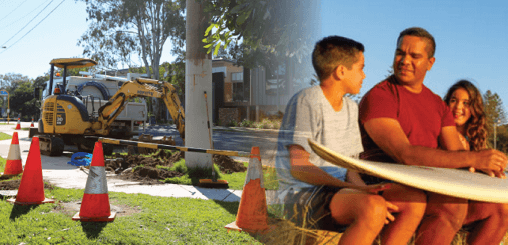
Have you asked the right questions to keep yourself and others safe for life?
- Do I have an approved excavation Permit prior to job start?
- Do I have the skills to safely operate equipment for this task and location?
- Do I know where all the utilities and services are in the area (depth below and height above)?
- Do I have suitable access/egress points if I’m required to enter an excavation >1.5m deep?
- Have I checked if the excavation is considered a “Confined Space”?
- Have I checked if suitable measures to prevent ground collapse are in place (e.g. shoring, sloping, benching)?
- Have I protected against equipment, materials or people falling into the excavation?
Mandatory Safety Rules
- Never work within an excavation without an approved permit
- Operate plant within defined safety limits
- Treat all services as live and maintain the safe approach distance
- Never enter an exclusion zone without authorisation

Excavations Best Practices

Structural Integrity Ground movement is controlled to prevent collapse (e.g. shoring, sloping, benching). Excavations >1.5 metre-deep in accordance with a Temporary Works design by a competent person.
Competency Persons responsible for issuing excavation permits or operating excavating or drilling equipment are certified as competent.
Risk Assessment Risk Assessment/ Permit in place for excavations or penetrations exceeding 200 mm. SWMS & emergency rescue plan in place as required.
Access Control Suitable entry, exit and escape methods are in place if persons enter excavations, including confined space controls if applicable. Open excavations correctly secured to prevent unauthorised access.
Exclusion Zones Maintained and clearly delineated to prevent encroachment of materials, mobile plant or equipment on the excavation.
Fir for Purpose Equipment Plant and equipment, including service locating equipment, approved as fit for purpose.
Services Identification Location, depth and/or height of services is positively identified (e.g. via service diagrams and potholing).
